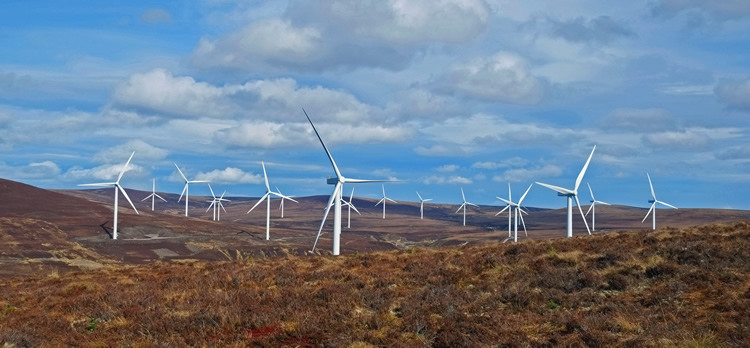More Power Came from Zero Carbon Sources than Fossil Fuels in 2019

The UK reached a new decarbonisation milestone in 2019, as more electricity was generated by zero carbon sources than by fossil fuels for the first time.
According to new figures released by the National Grid, wind, solar, hydro and nuclear power contributed 48.5% of the UK’s electricity over the last 12 months. Comparatively, fossil fuels, including natural gas, coal and other carbon sources such as oil and diesel, generated 43%.
The remaining 8.5% was produced from biomass and waste.
John Pettigrew, chief executive of National Grid, said: “As we enter a new decade, this truly is a historic moment and an opportunity to reflect on how much has been achieved.”
The shift—the fastest recorded by 25 major economies—has been driven by a decline in use off fossil fuels, especially coal, and dramatic growth in clean energy capacity.
Just a decade ago, fossil fuels were contributing more than three-quarters of the UK’s electricity, with coal alone yielding a third.
Since then, coal’s contribution has dwindled to just 1.9%, with the shuttering of old power stations—most recently, the Cottam coal plant in Nottinghamshire. The remaining power stations are used largely for balancing the grid and at times of peak demand. In the spring all were offline for a record 18 days, six hours and ten minutes—the longest the UK has gone without using coal since the Industrial Revolution.
Two other power stations, Aberthaw B and Fiddlers Ferry, are slated to close in March 2020 and the remaining four will shutter by 2025.
As the use of fossil fuels has decline, clean energy sources have grown dramatically. In 2009 they contributed just 22.8% of the UK’s power. Since then, capacity and generation has exploded, boosted by subsidy schemes.
While wind power provided just 1.3% of the country’s power in 2009, on a blustery day in December of this year, it produced 45%. Meanwhile, generation from offshore wind projects—favoured by the Conservative government—outstripped that from onshore installations for the first time in the third quarter of this year.
But while coal and the overall use of fossil fuels has fallen, the UK has become increasingly dependent on natural gas. Its share of the fuel mix that has grown from just 0.1% in 1990 to more than 38% last year—highlighting an area for future change.
Furthermore, most British homes continue to rely on gas for their heating, account for around half of the UK’s energy consumption and a third of its greenhouse emissions.
The National Grid will be spending £85 million to support a revolution in home heating, helping households switch away from gas boilers to electric heat pumps and hydrogen boilers. The company estimates that for the UK to meet its net zero commitments by 2050, 23 million homes will need to adopt low carbon heating technologies.
That’s all part of a £10 billion investment National Grid will be making in the UK’s gas and electricity networks over the next five years. £1 billion of that has been earmarked for supporting a transition to a zero carbon electricity system, targeted for 2025.
Read on our blog

With the government poised to implement tough new measures to...

Budget broadband provider TalkTalk has been notifying customers via email...

A year-long investigation by charity Citizens Advice has revealed a...

Education Secretary Nadhim Zahawi has announced a new commitment to...
